Food court from the inside. Or how the programmer did the foodcourt
Hello!
I had a dream to open my own restaurant for a long time, and for any dream you need to move quietly.
This summer I took the first step - I opened a food court on the 4 Seasons Market.
Most of the time he worked as a mobile developer and therefore could not do without a phone application, statistics, and indeed UX developments in the creation of a stand and product design.

')
There will be everything:
So, hello to everyone who came!
The article will begin in the style of self-interview - it is much easier and more convenient to read structured information, and when writing it is much easier to answer the prepared questions, so here is a list of questions and further topics:
A food court is a point where you sell food that you eat on the go, or nearby at a very uncomfortable table. Often distributed in various markets, festivals and fairs. Food courts are usually mobile, can change products and prices. There are more serious food courts that already have a permanent location, a range of products and are located in parks or shopping centers, in the so-called “food court” complexes.
Market is a buzzword for a “weekend fair” or mini-festival.
On a very unpretentious market (in which the author of the article participated at the time of the narration) nothing is needed, well, a maximum passport to sign a pseudo-contractor. I will note that the sanitary book, the book of complaints, the PI is not all about food courts. Here you can be fed with unknown stale food, cut with unwashed hands - so everything is at your own peril and risk. (The author of the article is, of course, an exception and does not in the least say that this happens in all similar establishments).
Depends on the market and organizers.
Participation in the "4 seasons" for 2 days off cost 10k rubles. The concept of square and place was not there.
"Lambada Market" already has a cost of about 10k per day.
Periodic themed food courts in Sokolniki and PG can cost up to 25k per day on holidays or 25k on a regular weekend. Fixed area - at your disposal one house.
The first Vegan Fest in Sokolniki Park cost from 5000r per 1 sq.m. Cost increased depending on sq.m. and “patency” of the proposed site (this will be discussed below separately).
These are some of the people involved in organizing an event. They agree on terms, conditions, rent space, provide wiring and electricity, light, can put pavilions or awnings.
Actually you solve all the issues with them, and not with the park administration or ArtPlay directly.
You sign the contract with them too.
In general, on the market you need to sell something.
Since you have already paid a certain amount for participation and most likely spent on the goods or work on its preparation (if you just do not sell the air or spend the lottery).
This event can also be considered as a good advertisement, you can even not sell anything.
For example, a psychic from the 14th season of the TNT battle participated in the 4 Seasons Market.
We turn to the outset: what is the connection between the market, the programmer and mobile technologies.
As a person who has been in IT for more than 6 years, he immediately got the idea to try to solve these problems first of all for himself:
Since I have been an iOs developer lately, I immediately realized that I needed a mobile application, and if I’m not doing this alone, then all the participants may have this problem, and they need this application.
The application should read the following statistics:
The list of products during the day does not change much (not counting the sale-off in the last hours of work), so the list of your products can be entered in advance in the app, you may need to quickly change the price.
The following inequality is explicitly fulfilled:
Number of past> = number of interested> = number of people who bought
So we understand the priority of action.
We are constantly busy (there are few people, the processes are not yet debugged), either selling, cooking, delivering, or advertising, so the number of clicks in the application should be minimal.
The application must be able to very quickly show the total revenue, hodovichki, unsold items (it may be time to change their price) and maybe something else.
The application must be reliable - naturally, the data is saved when it is unloaded from memory, if the application crashes, then no data should suffer, and so on.
Total basic application requirements:
Not the development specification, but for our project it fits perfectly.
On the screenshot below, Interface Roadmap (Made in Sketch, gray background for white screens only):
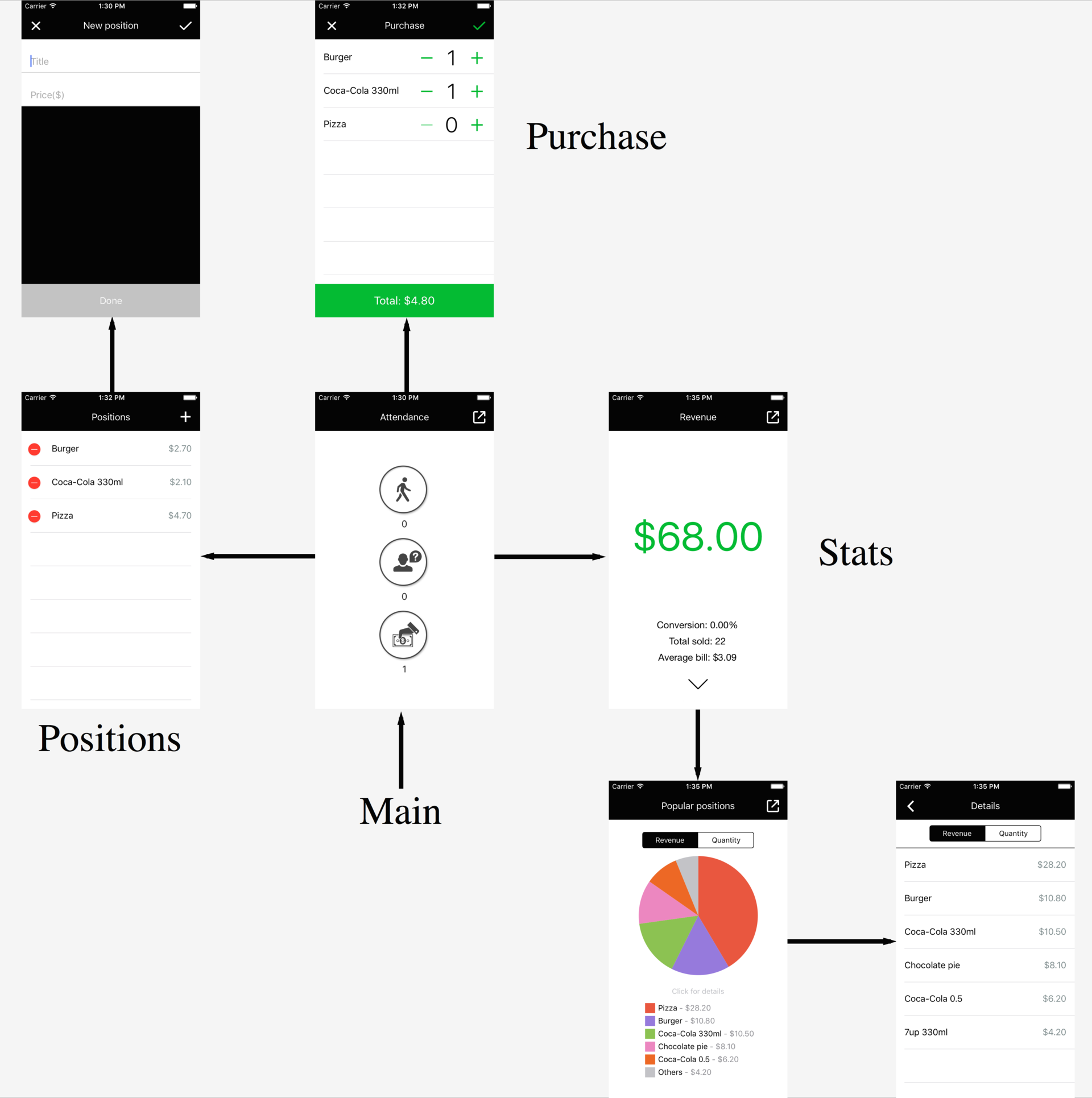
Main is the main screen, there are 3 main buttons on it: to count the past visitor who is interested and to arrange the sale. The application is always in front of you with the screen turned on, so the difficulty of performing basic actions is 1 click.
When you click on the lower button, you go to the Purchase screen and then return to Main.
The Positions screen is used to compile a list of products (name and price). Since the list can be (and should be) formed in advance, we rarely need to switch to this screen during our working day.
The Stats screen is an access to real-time statistics, it consists of several screens and the first one immediately answers the question “How much have we earned?”. You can also figure out by piechart what we successfully sell and what not, or go to a more detailed "list" form.
It is clear that the software being developed is specialized and is needed only by the target audience, that is, participants of food courts, exhibitions, and markets.
Since the application moves from private use to production for a group of people, then of course you need to show them the capabilities of the application and teach them how to use it.
Initially, the idea was to do a listelku from no more than 6 slides at the first launch, where it is compact and understandable to explain what is happening in the application and what it is for.
After I showed this option to a good designer / UX-eru, I heard in response that this is the wrong format and my list is more suitable for providing information that is new, for example, in an update and does not fix the actions that the user should do.
Therefore, as a result, interactive training was implemented in the form of a gradual passage of the whole process from entering a position to selling it and receiving statistics.
Good or bad, I want to ask you to rate. At the end I made a questionnaire =)
Of course, pleasant syntactic sugar (for example, guard), compactness compared to obj-c, plus a supporter of strict typing.
Swift's protocol allowed us to make very convenient decisions, for example, on Main and Stats there is one and the same button, the implementation of which turned out to be well implemented on the protocol with default implementation. Just about this functionality resulted in the code in the previous article .
The animations were not important, MVP and UX were important: there should be few clicks, buttons large and prominent, when you press the plus / minusek, the finger does not block the number, etc.
The only thing I allowed myself as a UX-experimenter is a new type of transition from the main screen to the list of products and statistics.
I did not want (did not work) the usual buttons on the navigation bar - it is not convenient to drag on, small ones and so on. Unnecessary elements on the screen are also not particularly climbed. Therefore, I decided to try the solution with transitions on svaypu. (Swipe already seems to be a routine gesture).
It looks like this:

This is an experiment; it is not yet clear whether it is convenient or not.
Sources, by the way, laid out - you can use.
Since I am not a designer, I had to create the very important thing such as a logo, icon and Default-screen myself. In general, the head was the most obsessive idea to associate the idea with the word "Food". There were ideas to revive the letters, but then there was a problem in the compatibility of the font thickness and the general style. Next comes a list of some intermediate options:
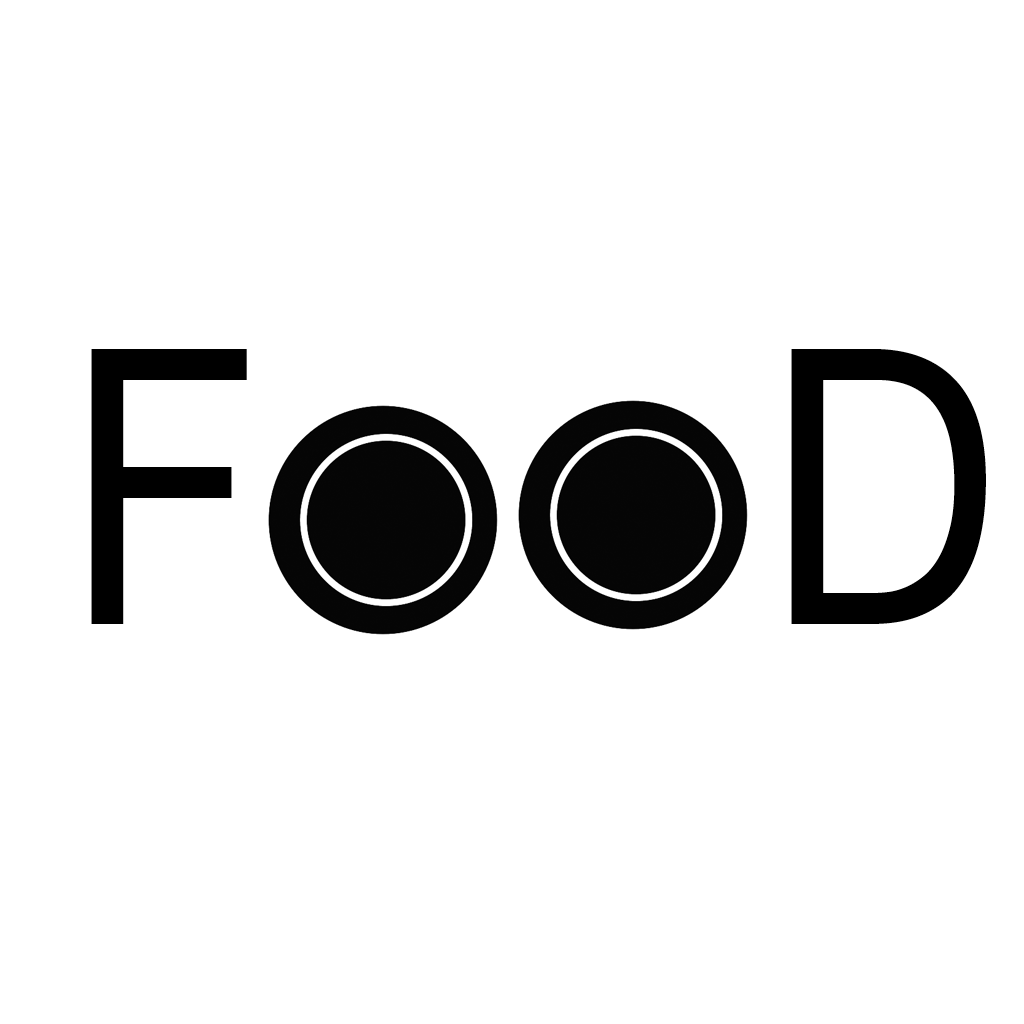
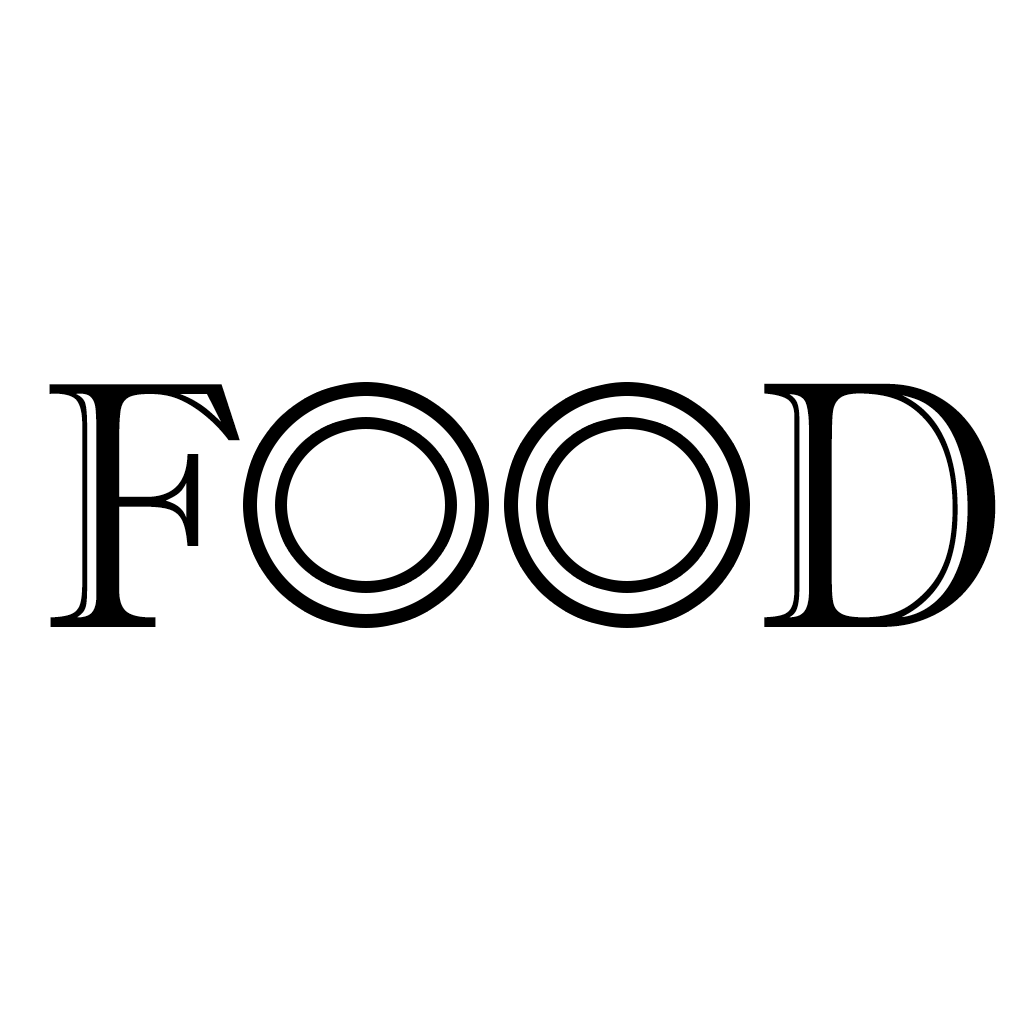
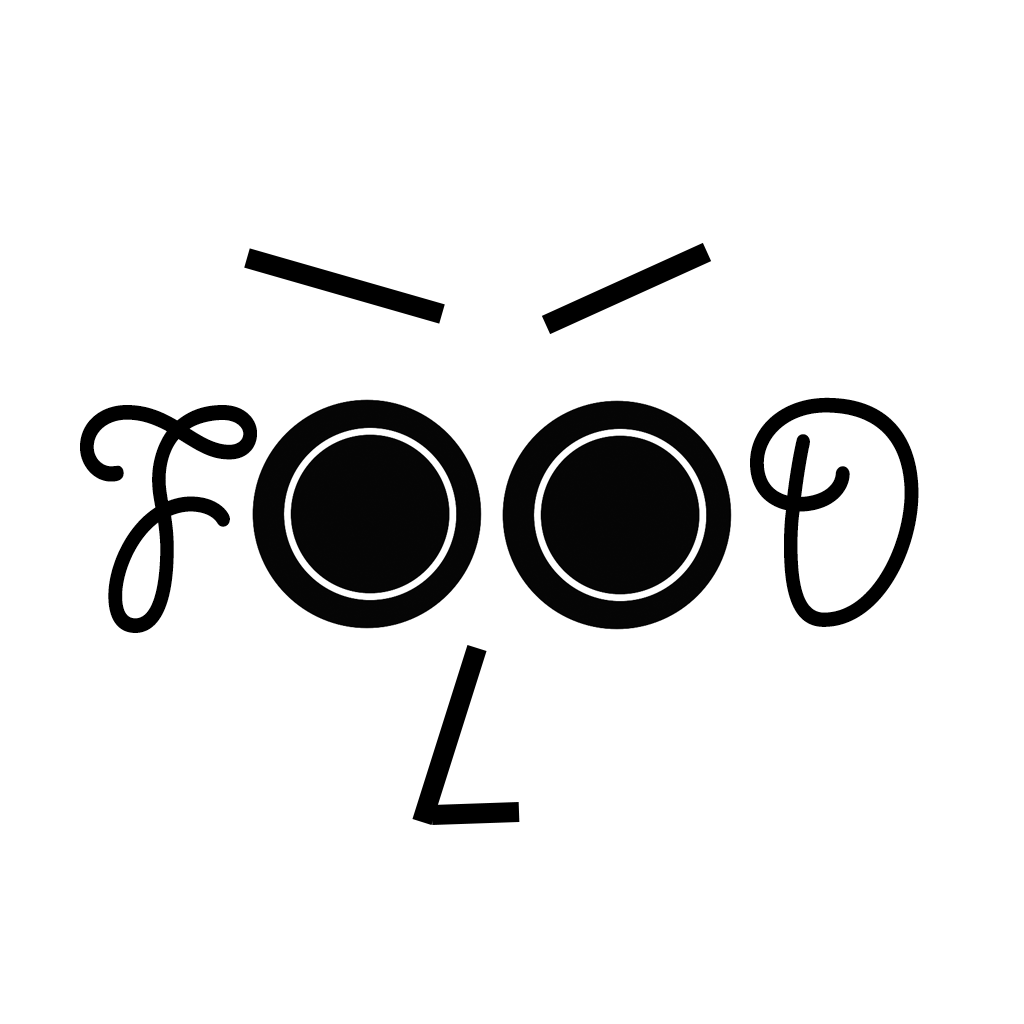


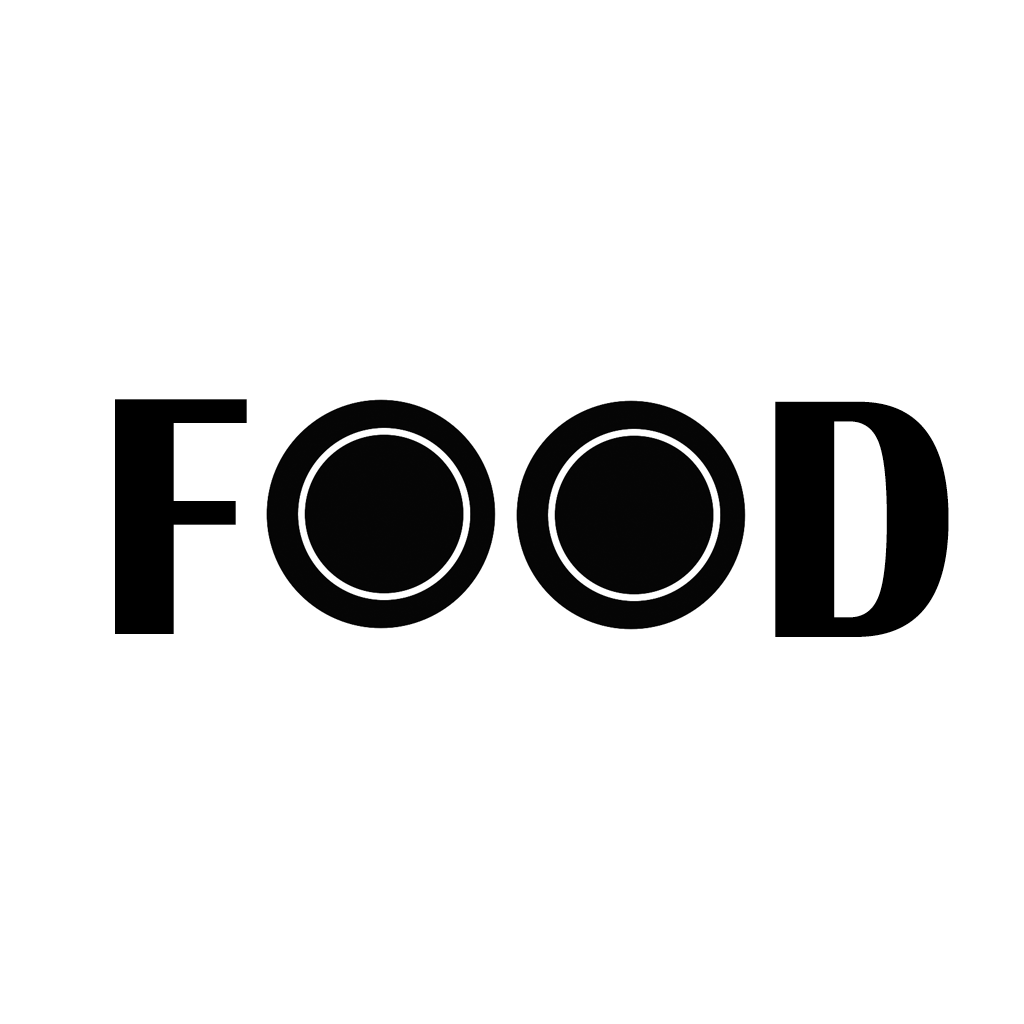
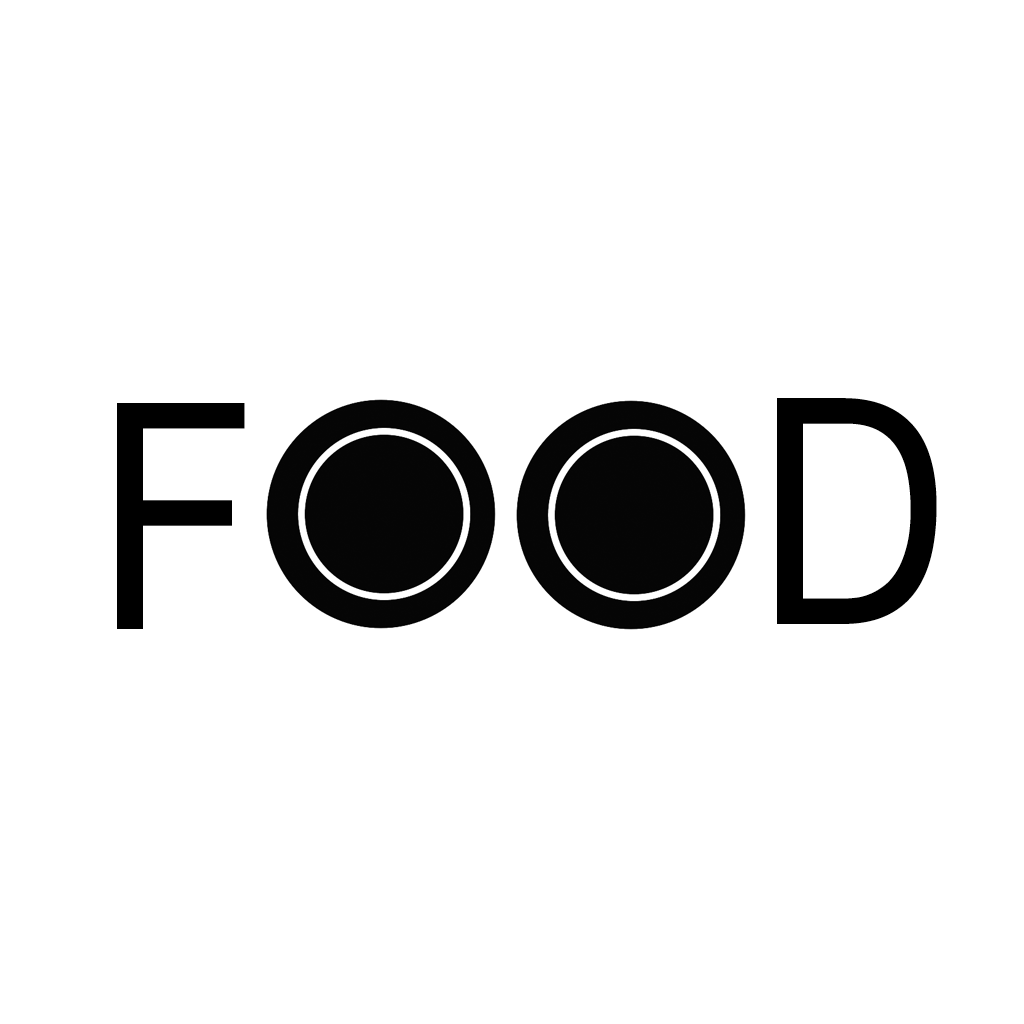

A variant that ends up in production:
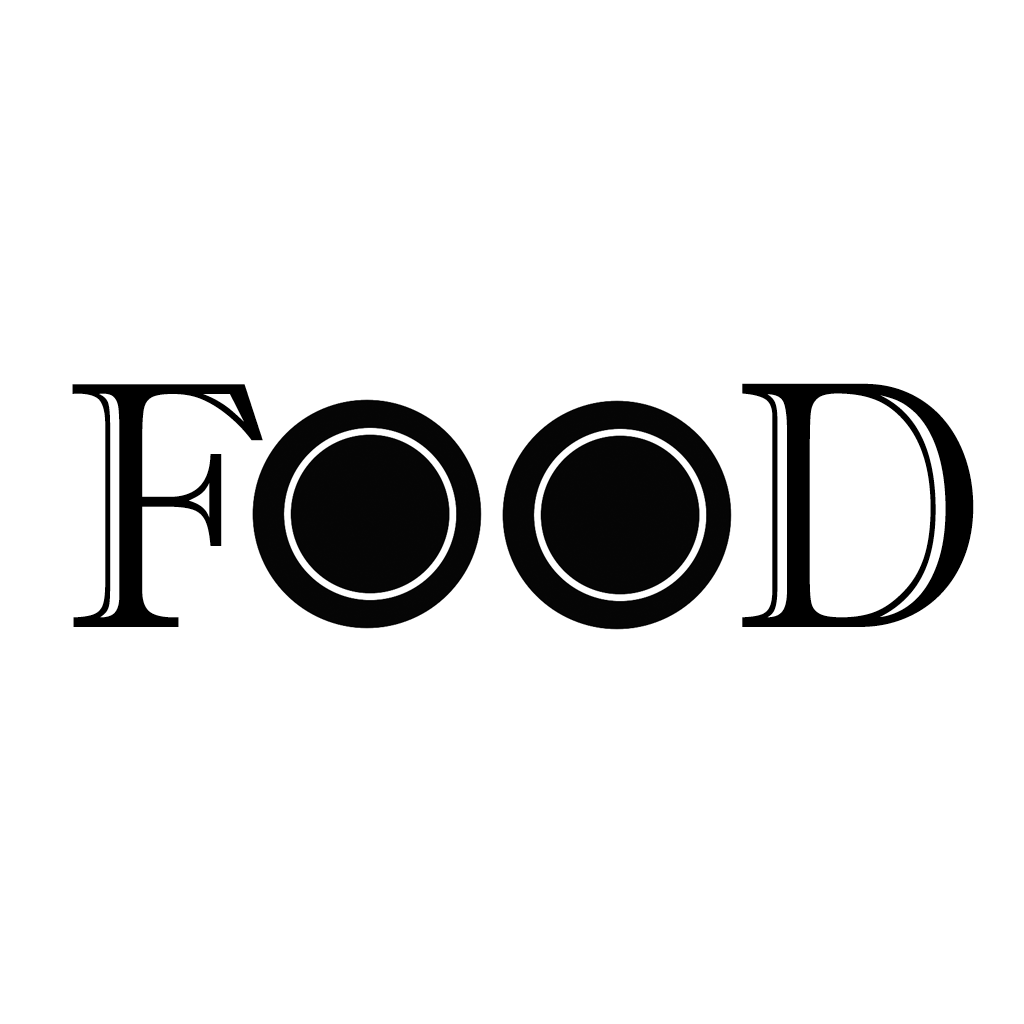
The most reasonable question in the development of any product: who needs it and how will people know about it?
It is unlikely that people with Habra are lived-in foodcourters and owners of retail outlets (although I hope I inspired someone).
The most 2 major channels (and already tested in action on "pre-orders"):
1) Bypassing the participants of the festivals live and distributing booklets to them with a link to the mobile application,
2) Electronic distribution to the participants through the organizers (the consent and interest of the organizers are needed),
3) Channels in specialized communities - but there are extremely few of them, this is not a highly developed niche in Russia.
1) Application development took a lot of time (primarily due to the main work and other projects).
2) The application was used for a long time at the stage of an MVP product with basic functionality and without design - this made it possible to abandon some initial assumptions,
3) If you are not a designer, it takes a lot of time for the interface and the UX,
4) Foodcourts are rogue, so the initial idea with the monetization of the application has been postponed for the time being + it is also unprofitable at the beginning to pay for it, because you need to attract some group of active regular users,
5) Checks in the AppStore began to take much longer time
6) The application had 2 rejects: the first because of the fact that too many words were put in the name of the application, which Apple considered over ASEO,
The second redget was due to the presence of Complication in the clock, although there weren’t any fact, the build failed because the pliste file had an empty array with complication.
Ps Thanks for reading! You can see and evaluate the final version of the intro here .
I had a dream to open my own restaurant for a long time, and for any dream you need to move quietly.
This summer I took the first step - I opened a food court on the 4 Seasons Market.
Most of the time he worked as a mobile developer and therefore could not do without a phone application, statistics, and indeed UX developments in the creation of a stand and product design.

')
There will be everything:
- about the market,
- idea,
- mobile app,
- design, logo,
- UX and offline usability,
- link to code
- link in the AppStore.
So, hello to everyone who came!
The article will begin in the style of self-interview - it is much easier and more convenient to read structured information, and when writing it is much easier to answer the prepared questions, so here is a list of questions and further topics:
- What is a food court?
- What is a market?
- What do you need to participate?
- How much is it?
- Who are the organizers?
- What should be done on the market?
- Two hares in one shot
- Problems of market participants
- Problems of the organizers
- Mobile app
- Mobile Application Requirements
- Interface
- Third-party libs
- Intro / training
- Why Swift?
- Animations
- Logo
- Distribution
- Results / Conclusions
What is a food court?
A food court is a point where you sell food that you eat on the go, or nearby at a very uncomfortable table. Often distributed in various markets, festivals and fairs. Food courts are usually mobile, can change products and prices. There are more serious food courts that already have a permanent location, a range of products and are located in parks or shopping centers, in the so-called “food court” complexes.
What is a market?
Market is a buzzword for a “weekend fair” or mini-festival.
What do you need to participate?
On a very unpretentious market (in which the author of the article participated at the time of the narration) nothing is needed, well, a maximum passport to sign a pseudo-contractor. I will note that the sanitary book, the book of complaints, the PI is not all about food courts. Here you can be fed with unknown stale food, cut with unwashed hands - so everything is at your own peril and risk. (The author of the article is, of course, an exception and does not in the least say that this happens in all similar establishments).
How much is it?
Depends on the market and organizers.
Participation in the "4 seasons" for 2 days off cost 10k rubles. The concept of square and place was not there.
"Lambada Market" already has a cost of about 10k per day.
Periodic themed food courts in Sokolniki and PG can cost up to 25k per day on holidays or 25k on a regular weekend. Fixed area - at your disposal one house.
The first Vegan Fest in Sokolniki Park cost from 5000r per 1 sq.m. Cost increased depending on sq.m. and “patency” of the proposed site (this will be discussed below separately).
Who are the organizers?
These are some of the people involved in organizing an event. They agree on terms, conditions, rent space, provide wiring and electricity, light, can put pavilions or awnings.
Actually you solve all the issues with them, and not with the park administration or ArtPlay directly.
You sign the contract with them too.
What should be done on the market?
In general, on the market you need to sell something.
Since you have already paid a certain amount for participation and most likely spent on the goods or work on its preparation (if you just do not sell the air or spend the lottery).
This event can also be considered as a good advertisement, you can even not sell anything.
For example, a psychic from the 14th season of the TNT battle participated in the 4 Seasons Market.
Two hares in one shot
We turn to the outset: what is the connection between the market, the programmer and mobile technologies.
Problems of market participants
- Participants (those who sell their positions) are at great risk (especially those who sell perishable goods like food and drink).
- The organizer says some abstract figure, which is called "permeability", for example: 5000 people per day. What does this mean for a member? - Nothing.
- Is it possible to understand approximately from this “exaggerated”, “abstract” number how many people will pass at your counter, how much something will buy, in order to understand how many products you need to buy, how much space, technology you need? - Almost not.
- By the end of the day there are always a lot of questions: how much revenue, how much profit, how many items are sold, how many more ingredients are there for tomorrow, what did people buy and what didn't?
Problems of the organizers
- Pay back the amount they spent on renting a room, tents, electricity, and so on.
- Invite and interest as many people as possible - thereby increasing the "patency" of the event.
- Leave the participants happy, otherwise, next time they probably will not come to them.
- Understand whether the market they organize is popular.
Mobile app
As a person who has been in IT for more than 6 years, he immediately got the idea to try to solve these problems first of all for himself:
- Find out how many people passed by my court
- Find out how many items I sold and which ones
- Know exactly the revenue for the current hour throughout the day - because it depends on how much you have to tear your
asshair and think how to increase sales turnover.
Since I have been an iOs developer lately, I immediately realized that I needed a mobile application, and if I’m not doing this alone, then all the participants may have this problem, and they need this application.
Mobile Application Requirements
The application should read the following statistics:
- Man passed
- Man got interested
- Man bought
The list of products during the day does not change much (not counting the sale-off in the last hours of work), so the list of your products can be entered in advance in the app, you may need to quickly change the price.
The following inequality is explicitly fulfilled:
Number of past> = number of interested> = number of people who bought
So we understand the priority of action.
We are constantly busy (there are few people, the processes are not yet debugged), either selling, cooking, delivering, or advertising, so the number of clicks in the application should be minimal.
The application must be able to very quickly show the total revenue, hodovichki, unsold items (it may be time to change their price) and maybe something else.
The application must be reliable - naturally, the data is saved when it is unloaded from memory, if the application crashes, then no data should suffer, and so on.
Total basic application requirements:
- 3 functions should always be available in the application: calculate the last person, count the interested person and enter the sale,
- In the application, you can create a list of products and a price in advance so that you do not enter it each time you sell it,
- The application should be comfortable, without unnecessary screens and transitions,
- The application must quickly display some indicators: revenue, sold positions,
- The application must be reliable and not delete the entered data without a command.
Not the development specification, but for our project it fits perfectly.
Interface
On the screenshot below, Interface Roadmap (Made in Sketch, gray background for white screens only):

Main is the main screen, there are 3 main buttons on it: to count the past visitor who is interested and to arrange the sale. The application is always in front of you with the screen turned on, so the difficulty of performing basic actions is 1 click.
When you click on the lower button, you go to the Purchase screen and then return to Main.
The Positions screen is used to compile a list of products (name and price). Since the list can be (and should be) formed in advance, we rarely need to switch to this screen during our working day.
The Stats screen is an access to real-time statistics, it consists of several screens and the first one immediately answers the question “How much have we earned?”. You can also figure out by piechart what we successfully sell and what not, or go to a more detailed "list" form.
Third-party libs
- CorePlot - for drawing diagrams,
- Amplitude - analytics.
- Crashlytics + Fabric - for collecting kreshy.
Intro / training
It is clear that the software being developed is specialized and is needed only by the target audience, that is, participants of food courts, exhibitions, and markets.
Since the application moves from private use to production for a group of people, then of course you need to show them the capabilities of the application and teach them how to use it.
Initially, the idea was to do a listelku from no more than 6 slides at the first launch, where it is compact and understandable to explain what is happening in the application and what it is for.
After I showed this option to a good designer / UX-eru, I heard in response that this is the wrong format and my list is more suitable for providing information that is new, for example, in an update and does not fix the actions that the user should do.
Therefore, as a result, interactive training was implemented in the form of a gradual passage of the whole process from entering a position to selling it and receiving statistics.
Good or bad, I want to ask you to rate. At the end I made a questionnaire =)
Why Swift?
Of course, pleasant syntactic sugar (for example, guard), compactness compared to obj-c, plus a supporter of strict typing.
Swift's protocol allowed us to make very convenient decisions, for example, on Main and Stats there is one and the same button, the implementation of which turned out to be well implemented on the protocol with default implementation. Just about this functionality resulted in the code in the previous article .
Animations
The animations were not important, MVP and UX were important: there should be few clicks, buttons large and prominent, when you press the plus / minusek, the finger does not block the number, etc.
The only thing I allowed myself as a UX-experimenter is a new type of transition from the main screen to the list of products and statistics.
I did not want (did not work) the usual buttons on the navigation bar - it is not convenient to drag on, small ones and so on. Unnecessary elements on the screen are also not particularly climbed. Therefore, I decided to try the solution with transitions on svaypu. (Swipe already seems to be a routine gesture).
It looks like this:

This is an experiment; it is not yet clear whether it is convenient or not.
Sources, by the way, laid out - you can use.
Logo
Since I am not a designer, I had to create the very important thing such as a logo, icon and Default-screen myself. In general, the head was the most obsessive idea to associate the idea with the word "Food". There were ideas to revive the letters, but then there was a problem in the compatibility of the font thickness and the general style. Next comes a list of some intermediate options:








A variant that ends up in production:

Distribution
The most reasonable question in the development of any product: who needs it and how will people know about it?
It is unlikely that people with Habra are lived-in foodcourters and owners of retail outlets (although I hope I inspired someone).
The most 2 major channels (and already tested in action on "pre-orders"):
1) Bypassing the participants of the festivals live and distributing booklets to them with a link to the mobile application,
2) Electronic distribution to the participants through the organizers (the consent and interest of the organizers are needed),
3) Channels in specialized communities - but there are extremely few of them, this is not a highly developed niche in Russia.
Results / Conclusions
1) Application development took a lot of time (primarily due to the main work and other projects).
2) The application was used for a long time at the stage of an MVP product with basic functionality and without design - this made it possible to abandon some initial assumptions,
3) If you are not a designer, it takes a lot of time for the interface and the UX,
4) Foodcourts are rogue, so the initial idea with the monetization of the application has been postponed for the time being + it is also unprofitable at the beginning to pay for it, because you need to attract some group of active regular users,
5) Checks in the AppStore began to take much longer time
6) The application had 2 rejects: the first because of the fact that too many words were put in the name of the application, which Apple considered over ASEO,
3.4 Details
The app Store includes:
Specifically, the following words in your app name are considered keywords or descriptors:
During the day, he received count of traffic, traffic, average bill, conversion, total count. Make better - more sales, customers, goods, profit.
The second redget was due to the presence of Complication in the clock, although there weren’t any fact, the build failed because the pliste file had an empty array with complication.
Ps Thanks for reading! You can see and evaluate the final version of the intro here .
Source: https://habr.com/ru/post/272543/
All Articles